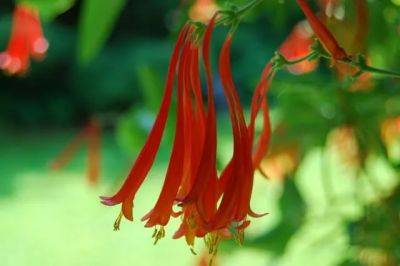I gave L. sempervirens (Zones 4-9), whose woody stems twist around the corner post on my back porch the last decade, a serious pruning last year, after it seemed to have a lot of leggy growth that was especially appealing to the aphids. It has responded really favorably: heavy bloom and stronger growth after a year of recovery.Its far more subtle yellow-flowered cousin (above), L.s. ‘Flava’ or ‘Sulphurea,’ hasn’t really been troubled by insects here in all the years I’ve had it, and seems content to grow in part shade, not just full sun, an added blessing. If you will only have one sempervirens, maybe this should be it? (Hint, hint.)The L. heckrottii hybrid called ‘Goldflame’ (above, Zone 5-9) has been around for years and is also sold as ‘Pink Lemona
Insects & worms Ideas, Tips & Guides
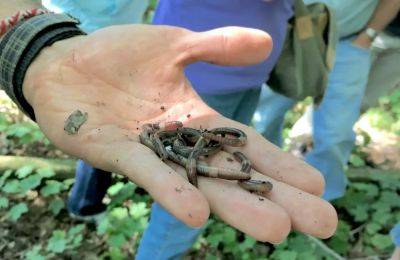
Coping with invasive jumping worms, with brad herrick of uw-madison
THE QUESTION “What do I do about the Asian jumping worms that are destroying my soil?” has outpaced what was the most common thing I was asked, year in and year out, for decades as a garden writer—the relatively simple challenge of “How do I prune my hydrangea?”
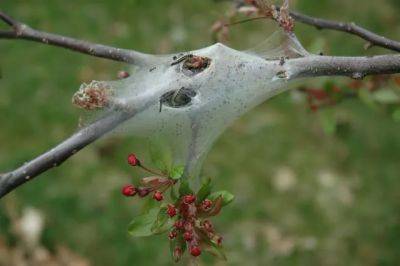
Calling all caterpillars
Each Eastern tent caterpillar overwintered as part of a mass of several hundred eggs, and hatched in early spring to get ready to start eating. Fruit-tree foliage, including that of crabapples, is on their preferred diet, so I make a habit of destroying all the masses I can get to in my 10 crabapple trees, and elsewhere around the yard. I’m not going to single-handedly knock back the entire population, of course, but this simple, non-toxic tactic does reduce the damage to my trees so I can enjoy them in my landscape with leaves, instead of without.I simply use the piece of bamboo cane to remove the nest, inserting the tip into the structure and twisting gently till all the sticky, web-like bits (and the caterpillars) are on the stick. I deposit the contents on the ground near my shoe, and step on it for good measu
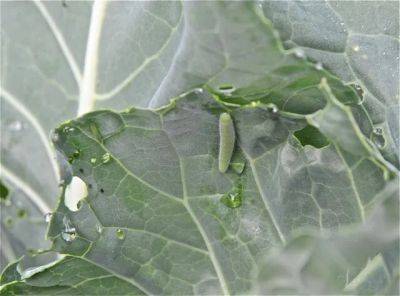
Caterpillar alert: who’s eating my cabbage and broccoli?
Though I cannot see without a hand magnifying lens if they have the requisite tiny markings, I’m betting from its overall appearance and velvety surface that this is the larval stage of the cabbage white butterfly, Pieris rapae, because I have also seen its adult stage flying around, a smallish butterfly with a couple of smudgy spots on each white wing.This article from Missouri Botanical Garden is extremely detailed on my latest visitor, also known as the imported cabbage worm, and other pests of cabbage relatives, including cabbage looper and the caterpillar of the diamondback moth. The latter two caterpillars are smooth, not velvety, among other clues to differentiating among the three.As with all caterpillars, these can be controlle
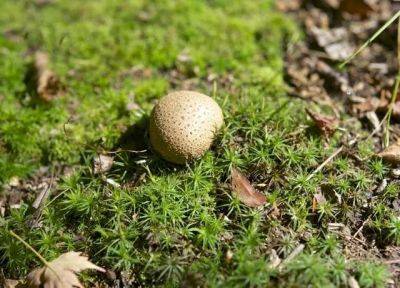
A walk in the woods with naturalist charley eiseman
Quick backstory: You may remember Charley, co-author of my most-used field guide “Tracks and Sign of Insects and Other Invertebrates,” from our recent interview about galls and leaf mines, two of his specialties.(I’m giving away two more copies; enter by commenting in the form way down at the bottom of this page, after reading the entry details in the tinted box just before that. The book can help you to know what you are seeing when you look closer, too—kind of like always having Charley by your side.)When that story ran, Charley had noticed a photo I used to accompany it–of a squiggly “leaf mine” I’d observed in my Asian-native big-leaved perennial called Petasites. He’d wondered if it was caused by the insect that feeds in a few different genera in the tribe Senecioneae (including some native American botanical cousins of Petasites). Why don’t you come try to find out, I’d suggested—and while you’re here, why don’t we have a
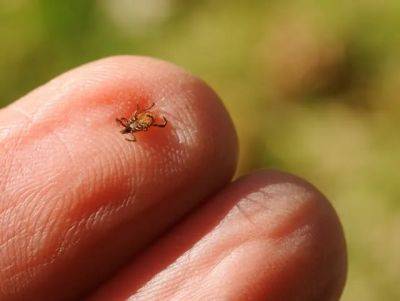
Let’s twist (ticks) again…
The Tick Twister is just one brand of similar, inexpensive devices available at health-food stores or pet stores, and as the latter bit of information implies, it’s just as good for removing ticks from pets as from people. For about $4, it really beats gouging at yourself with sharp instruments. That’s what I did for years before I was given a twister (or actually a set of two, which is how they came packaged when I got mine) as a gift.Now I’m prepared for any size tick. The working end slips between your skin and the embedded tick, and the notch in the device allows you to grab the embedded tick securely. The key: don’t pull, but twist. Out comes the invader, embedded mouth parts and all. Voila! One last note: The latest model looks a lit
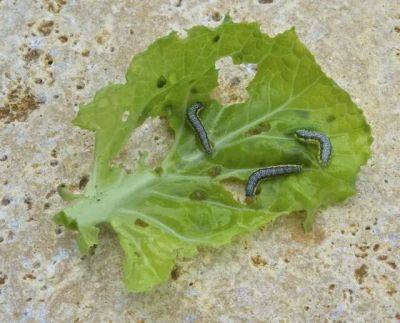
Latest brassica pest: cross-striped cabbage worm
(They’re also really beautiful, if you look at them up close–but beautiful in the way that Japanese beetles are beautiful, meaning not enough for me to count them as beloved pets and keep them around or anything.) Squish!The cross-striped cabbage worm larvae are sort of blue-gray, and as their name suggests striped across their bodies. Not so many years back, it was more a pest in Southern farms and gardens, but has gradually made its way to southern New England, at least. I read up on them in various places–U-Mass Amherst; at the University of Georgia, and so on–and what I conc

Into the drink: making pickles, drowning beetles
LIKE CLOCKWORK THEY START TO APPEAR ABOUT NOW: A first harvest of cucumbers, and also one of Japanese beetles. Into separate and quite different “brines” they go as fast as they develop, one a vinegar-salt formula, the latter a bit bubbly.

Precarious time for monarchs and their migration
“Last year [2012] at the overwintering sites, the area occupied was at only 60 percent of its previous low,” she says. “It had been declining, but that was astonishingly low.”The migration-monitoring program Journey North also reported lower stats in 2013’s cold spring. And though the numbers were only preliminary when we spoke that fall, University of Minnesota’s Monarch Larva Monitoring Program seems to indicate that “we’re at about 20 to 30 percent of our average,” Oberhauser says, acknowledging that these drastically lower numbers might be a “new normal.” But she’s not sounding defeated, by any means.A big positive: A lot of people are interested in monarchs. “Though it will be difficult to make up for all the habitat we’ve lost, we can make that ‘new normal’ as good as we can.” (Ways to help are father down this page.)what going wrong for monarchs?MONARCH
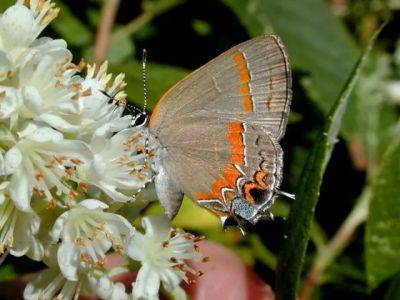
Notable natives, from mountain laurel to milkweed, with andy brand
I spoke about some notable natives with my friend Andy Brand of Broken Arrow Nursery, with whom I often hosting half-day workshops in my Hudson Valley, New York, garden, when we focus on upping the beneficial wildlife quotient in your own backyard with better plants and better practices. Andy has been one of the experts I’ve pestered for ideas as I’ve been doing that in my own garden in recent years to good effect.Andy is manager of Connecticut-based Broken Arrow, and he’s a serious amateur naturalist, and founder of the Connecticut state butterfly association. (That’s a photo by Andy of a red-banded hairstreak on a Clethra blossom, top of page.) Learn where many familia
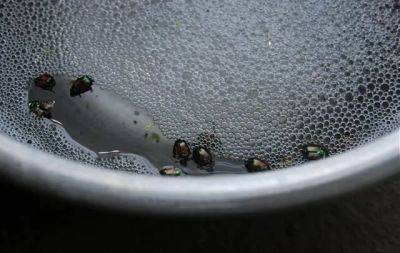
(japanese) beetle juice
Besides drowning Japanese beetles in bowls of soapy water, I have my eye on some rabbits who seem to be working their way through the place. Wish my neighbor, Herb, who has a knack for trapping every manner of thing, hadn’t gone to Maine for the summer. Herb? Oh, Herb?With the Japanese beetles, I’m long past the beetle-bag phase of my gardening career. I think that those l
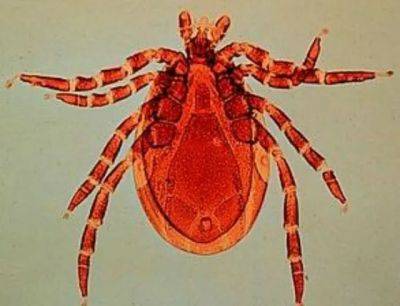
The latest on backyard tick research, with dr. neeta connally
In the fall of 2016, Dr. Connally won a $1.6 million grant from the Centers for Disease Control to fund a four-year study, in coordination with the University of Rhode Island, to gauge the effectiveness of various tick control methods in the areas around people’s homes. She’ll tell us more about the angles being pursued, and also about self-care topics, from treated clothing to the use of topical repellents and more.Read along as you listen to the Dec. 11, 2017 edition of my public-radio show and podcast using the player below. You can subscribe to all future editions on iTunes or Stitcher (and browse my archive of podcasts here).backyard tick research, with dr. neeta connallyQ. A little context first: You’re in the Northeast, where a lot of the cases of Lyme in the United States occur, but there are multiple tick species around the nation. You

Galls, leaf mines and other tracks and signs of insects (win a field guide!)
Charley Eiseman and Noah Charney’s 2010 book is full of photos of all the oddball things you see outside (if you stop long enough to notice!): egg cases and cocoons and all kinds of webs; folded and curled-up leaves as if something’s hidden inside (it is!); and all manner of bumps, lumps, notches, and holes in foliage, bark, you name it. Even tiny previously unexplained pattern in the sand…and soil…a.k.a. tracks and signs of insects.“I’ve always been interested in everything around me,” says Charley, whose Master’s degree is from the University of Vermont’s field naturalist program. “Then someone gave me a digital camera right after I graduated from college, so I started paying closer attention to the little things. And then I started wishing I had a field guide to tell me what all these signs left by insects and other invertebrates were—but it just didn’t seem to exist.”Charley and Noah took it upon themselves to create that guide, in “Tracks and Sign of Insect
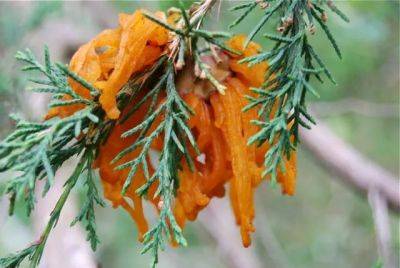
Trouble in paradise: galls, beetles & more woes
CEDAR APPLE RUST is having a banner year here. So what do you do when you live with warring roommates? In the case of the back-and-forth rounds of battle between the towering Eastern red cedar (Juniperus virginiana) in my front yard and all apples and apple relatives around the place, nothing.Well, I do watch in fascination, especially at the stage of cedar apple rust above (a few weeks ago), when orange, almost gelatinous “telial horns” are developing where the cedar galls were last fall and winter. I don’t intervene, despite the havoc this fungus causes, particularly foliar damage and defoliation of apple relatives (the reason my shadbush, or Amelanchier, and my oldest of apples lose their leaves so early each year; the reason I don’t even try to grow hawthorns).Quince, crabapple and pear are some of the other plants similarly affected.
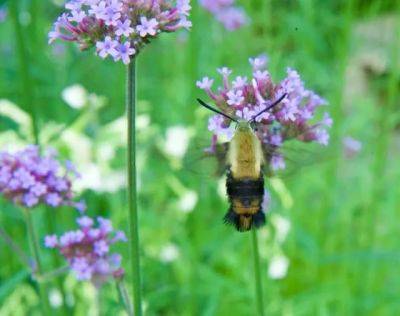
August is abuzz with visitations (and not just humanoid)
I HAD A GARDEN-VISITING ‘OPEN DAY’ here of the human variety on the weekend, but every day I have visitors who fly in or hop in or slither in at will, without tickets or any other formalities. August is abuzz with visitors, including seven or eight Great Spangled Fritillary butterflies (above), who have been enjoying a patch of Verbena bonariensis every sunny afternoon the last week or so. Look who else is in evidence lately:
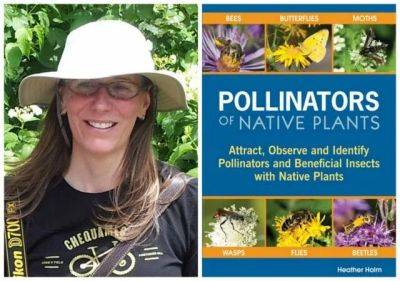
‘pollinators of native plants,’ with heather holm
Native bees species (like the mining bee above on the wildflower boneset) don’t get as much attention, and other insect pollinators even less, but without our wild pollinators we’d enjoy far less biodiversity, both in plants and animals—because they’re key to the food web, which would otherwise break down. To get to know some of these unsung heroes and the critical roles they play, I spoke with Heather Holm, author of the book “Pollinators of Native Plants,” which teaches us how to identify and attract and appreciate them in our gardens and beyond. (Enter to wi
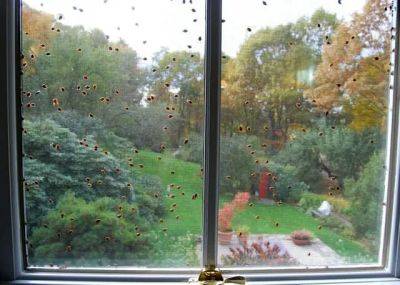
The mixed blessing of the asian lady beetle
These non-native “ladybugs,” introduced by the Department of Agriculture to help combat certain agricultural pests, have made themselves right at home in America—and in my house, too. In fall, the south-facing side of the exterior can be teeming with patches of them, as they look for places to tuck into and overwinter. The USDA imported lady beetles from Japan as early as 1916 as a beneficial insect, to gobble up unwanted pests on forest and orchard trees, but it was probably later releases, in the late 1970s and early 80s in the Southeast, that took hold. Today, multicolored Asian lady beetles have made themselves completely at home around the United States, easily adapting to regions as diverse as Louisiana, Oregon, and mine in New York State.
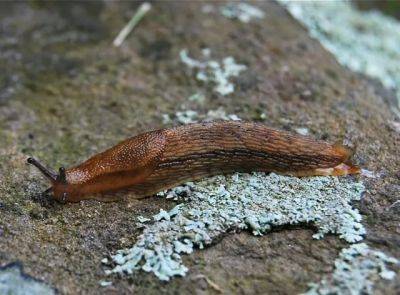
Slug control, with a little help from my friends
Eliminate hiding places. Wilted or slightly decaying foliage left in the garden can provide perfect hiding places, as it often bends to touch the ground. This week, now that things have dried a bit so I can get into the beds, a more ruthless approach to cutbacks than normal is scheduled, since the extreme rains caused so much excess, often floppy, growth.Don’t over-mulch. One to perhaps 2½ inches of mulch is desirable; layering on thicker amounts than about 3 inches just invites damp conditions that slugs love, plus it provides a great place to hide.Set out safe baits or traps. There are self-described “nontoxic” slug baits these days (though research institutions like Cornell use the term “low-toxicity,” which is probably
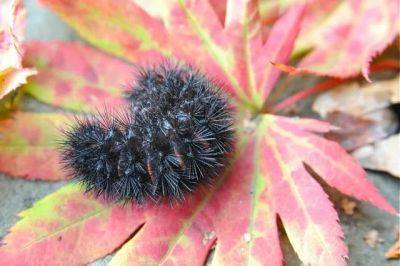
Furry black beasts, from 2 inches to 100 pounds
ISEEM TO BE A MAGNET for furry black creatures, a trend that I suppose started when the cat of my dreams adopted me all those years ago. This week, he and I have been visited by two other thick-coated types: the biggest caterpillar I have ever seen, Hypercompe scribonia (above, who will become the giant leopard moth), and a not-so-big (but big enough, thank you) American black bear, Ursus americanus, who completely terrorized resident fur-bearer Jack the Demon Cat in the overnight hours last night.

Links: gleaming dragonflies, oliver sacks at 80
LATEST LINKS: Too-hot-to-handle weather has had me indoors for a broad swath of each recent day, and that means more than the usual dose of web browsing—and a couple of new links to share. One (a video) is an extraordinary take on dragonflies; the other a moving essay on what I think is the garden’s most important and insistent message: that nothing lasts. The latter is delivered not by a gardener at all, but by the neurologist Oliver Sacks. Some decidedly non-horticultural but ever-so-moving links I think you’ll like:

Why i'm abuzz about bugguide.net
It’s not all about pretty pictures–when and where a bug was recorded is a big part of the information being captured as the image itself. That’s because the site “helps expand on the natural histories” of its subjects, it says. “By capturing the place and time that submitted images were taken,” it explains, “we are creating a virtual collection that helps define where and when things might be found.”I would have felt welcome enough after Maury‘s hello, but then pretty quickly things got even friendlier. A previously anonymous recent arachnid visitor of mine—a colorful spider that was the second photo I uploaded (the one above)—got identified by BugGuiders with relative certainty asa Shamrock Orbweaver.“Maybe Araneus trifolium? Let’s see what the others think,” Contributing Editor Laura said, in the notes that suddenly appeared below my image.“I’m pretty sure this is A. trifolium,” concurred Contributing Editor Kryontf.Love it.
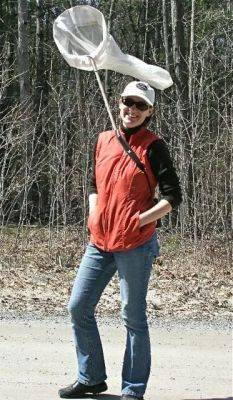
Giveaway: new ‘peterson field guide to moths’ and why to get out and go mothing
I ONLY GOT TO PAGE 5 of the new “Peterson Field Guide to Moths of Northeastern North America” before I was hooked. “Moths are everywhere,” it proclaims, and (hearing that as a challenge) I simply stood up, got my camera and went outside for a mere 10 minutes. The authors were right: Even though it was sunny midday, I photographed seven species (including the luna moth, above), and got so excited trying to ID them, I wrote to co-author Seabrooke Leckie—a stranger—and sent her my shots.
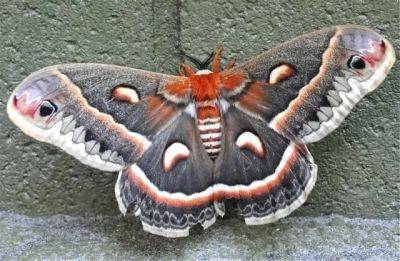
Cecropia moths, millipedes and other wonders
TIME FOR A LITTLE NON-PLANT MOMENT, captured in a quick jumble of other-than-botanical snapshots from around the garden lately.
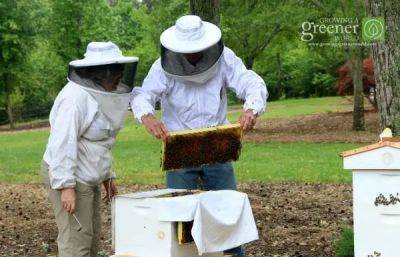
Beginning beekeeping, with joe lamp’l
IT’S A DREAM many gardeners and farmers entertain: To become a beekeeper, adding honeybee hives to the landscape both for the pollination work that bees can do and for the delicious by-product we can harvest a share of, thanks to them.
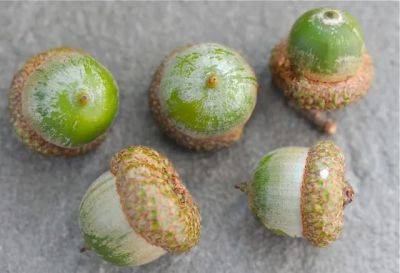
The acorn connections, with dr. rick ostfeld: ticks, gypsy moths, songbirds and more
Research from the nearby Cary Institute of Ecosystem Studies in Millbrook, New York, reveals how acorns initiate a complex series of ecological chain reactions. And not just the obvious ways, like feeding turkeys or chipmunks or deer, but in influencing Gypsy moth outbreaks and tick-borne disease risk, and even the reproductive success of ground-nesting songbirds.Dr. Rick Ostfeld, a disease ecologist from Cary Institute, helped me understand what–both seen and unseen–is going on with those tiny acorns and their mighty, wide-ranging influences. Read along as you listen to the Oct. 19, 2015 edition of my public-radio show and podcast using the player below. You can subscribe to all future editions on iTunes or Stitcher (and browse my archive of podcasts here).my q&a on acorns’
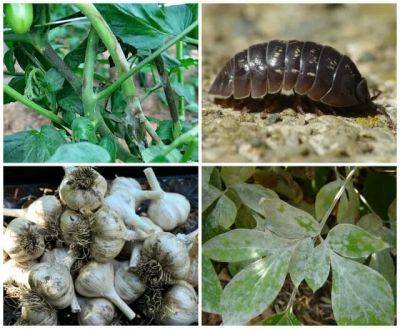
Powdery mildew, sowbug and pillbug infestation, fungicides on tomatoes, garlic bloat nematode: q&a with ken druse
In Part 1 (a transcript of which is at this link) we talked with a caller curious about the wonderful tree called Stewartia and how to make it happy—plus Ken recommended other garden-sized, multi-season trees to consider adding to your landscape, including dogwoods, redbuds, and tree lilacs.Ken, of Ken Druse dot com, is a longtime garden writer, author and photographer and all-around great gardener—and great friend. If you have a question for a future show, you can submit it in the comments on either of our websites, or use the contact form to send us an email from either site, or ask us on my Facebook page.Read along as you listen to the July 10, 2107 edition of my public-radio sho
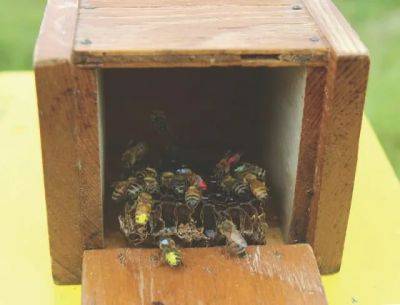
Beelining: in search of wild honey bees, with tom seeley
This history of beelining, the other way to connect to honey bees besides keeping hives, is the subject of the book called “Following the Wild Bees: The Craft and Science of Bee Hunting,” by Cornell University biologist Thomas Seeley, just released in paperback edition. Tom, Horace White Professor in Biology in the Department of Neurobiology and Behavior at Cornell, has been passionately interested in honey bees since high school, eventually doing his doctoral thesis on them, and his ongoing scientific work has primarily focused on understanding the phenomenon of swarm intelligence with the help of these incredible animals.Learn about how a hive works, with its female-dominated order, about how and why Tom beelines to locate wild hives. And maybe most astonishingly listen about what he calls our “shared uniqueness” with the honey bees–what characteristic we share with

The unholy holey garden: tackling slugs
I WAS ALMOST RELIEVED TO HEAR FROM a longtime reader that his Geranium macrorrhizum looked like some kind of lace–“shot through with tiny holes,” and that “this has never happened before.” Me too, and me either. Hostas, yes, and so many other things–but the trouble-free, aromatic, tough-as-nails bigroot geranium? All I can say is: 2012 is host to some fierce breed of slugs–and thanks to another reader, I have also found cabbage looper caterpillars‘ excrement (ahem!) in the geraniums, alongside the slime trails.

A new creature on me: the amazing nematomorph
“Something odd has to happen for hairworms to be on soil or vegetation, instead of in water, so at first when I got those calls I thought: It must be earthworms,” says Hanelt, a Research Assistant Professor with the Center for Evolutionary and Theoretical Immunology in the Department of Biology at the University of New Mexico in Albuquerque. “But I asked one caller to send me some—and lo and behold, they were hairworms.”It took years between the time Hanelt saw his first nematomorph, while on a survival-training hike in high school, until he actually knew what it was.“There they were out in the middle of the forest in winter, in a bucket of water,” he recalls. He saved the strange animal,
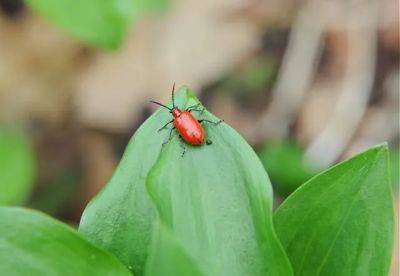
Fighting lily leaf beetles organically
Much in the same way I deal with everything from tomato hornworms to adult Japanese beetles to Viburnum leaf beetle and tent caterpillars and even the occasional slug in a wet year, my approach to lily beetles is manual–as in pick and squish, or drown.You have to get the adults, and also the eggs, which start out tan and then go from orange to red when they are close to hatching. They can be found wherever there are copulating adults (which is anywhere that adult beetles are, it seems from their flagrant behavior), on the undersides of leaves in uneven lines like a bit of a tiny zig-zag. Squish!Since the beetles overwinter in the soil, the minute lily or fritillaria foliage emerges, there are hungry beetles to damage it, too–meaning if they’re in your area, you probably are already seeing holes. Even if you didn’t get started right away, beg
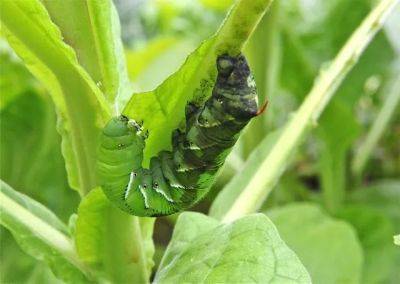
Is that a tobacco, or tomato, hornworm?
The tomato hornworm and tobacco hornworm both have angled white markings on their sides, but the tobacco hornworm’s seven marks just go in one direction, and the white is edged in black; the tomato hornworm’s eight marks per side are each more like a chevron, or “V,” with no black edge. The other big difference: Tobacco hornworms’ “horns” (which look like a tail) are usually reddish; the tomato hornworms’ are black or blue-black. (Oddly, I don’t have a photo of the tomato hornworm, but you can compare them on this University of Florida web page.)That University of Florida Entomology site has photos of the very similar-looking sphinx moths that each one becomes, too.I think the one just above was more recently “hatched,” because its body was still dark-colored, but I’m not certain. Maybe he’d just been smoking and got all sooty? (Kidding.) You can see all the life phases–caterpillar, chrysalis, sphinx moth–here.I have to say, I’m violent when one of these guys is eating my tomatoes in early summer, and it’s all “off with their heads” over here then. But in fall, as the garden un
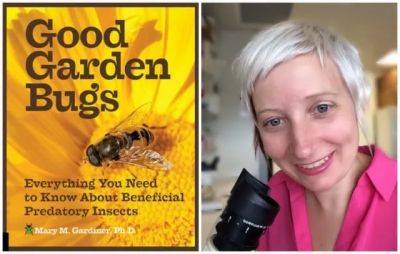
Cultivating ‘good garden bugs,’ with dr. mary gardiner
Here’s the wrinkle, though: Most of us probably don’t know which ones those are, and in fact have misconceptions about who’s who–often deeply ingrained by fear or a visceral sense of creepiness about insects.In her new book “Good Garden Bugs: Everything You Need to Know About Beneficial Predatory Insects,” Mary Gardiner (above and below) introduces us to a world of garden helpers, and she joined me on my public-radio show and podcast to do just that.Read along as you listen to the June 29, 2015 edition of my public-radio show and podcast using the player below. You

Evaluating native plants at mt. cuba center, with george coombs
In the early 1990s, when I was working on a book called “The Natural Habitat Garden” with my friend Ken Druse, we traveled the country interviewing native-plant enthusiasts and photographing their gardens. One memorable stop was the home of Mrs. Lammot du Pont Copeland, outside Wilmington, which today is the botanic garden called Mt. Cuba Center, with more than 50 acres of display gardens on more than 500 acres of natural land.I’d never seen native terrestrial orchids before, or the vivid red and yellow wildflower called Spigelia marilandica anywhere, and that day I learned that some discerning and forward-thinking experts such as Mt. Cuba’s first horticulture director, the great Dick Lighty, were already busy selecting “better” forms of native plants for garden use–a trend that has accelerated and become one of the hottest areas of contemp
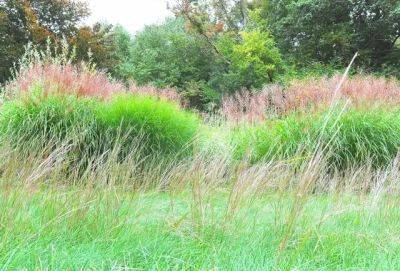
Garden resolutions: what i’ll do differently
1. Mow more creatively. The dry season we’ve had reminded me of this, when rather than risk the steep hilly part above the house burning off to an ugly brown, I just let it grow the last eight or 10 weeks.Little bluestem (Schizachyrium scoparium) was part of the jumble up there when I got here, and I used to let it flourish (seen above in foreground, with an island of Miscanthus in the back), mowing just once in late April or early May. Eventually brambles and other woody things started to take over, so I started mowing it short, like lawn, to eradicate them. That went on for five years or thereabouts. And then, this summer, I stopped.Up popped the bluestem again, and is taking on its beautiful redd
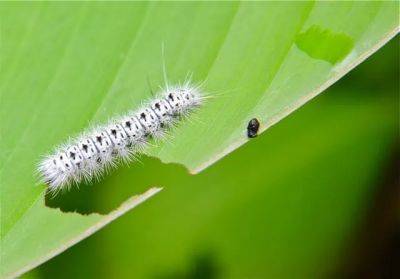
Making friends with late-summer caterpillars
Lately I have a lot of little fuzzy black and white creatures eating the leaves of my cannas (above), which is what got me started wondering who’s who. Turns out that’s the larval form of a hickory tussock moth, I think, whose usual diet is ash, elm, oak, hickory, maple, willow, and other trees.Though he looks velvety, look but don’t touch, apparently: The long “lashes” of the hickory tussock moth, Lophocampa caryae, are hollow tubes connected to poison glands, and can give susceptible people a stinging nettle-like rash or other reaction. The rest of the bristles, or setae, may also be irritating.This extensive University of Wisconsin-Milwaukee article offers a full portrait of the life of the hickory tussock moth, which apparently will spend the winter in a silk cocoon under tree bark or on the ground, then eventually works its way gradually n
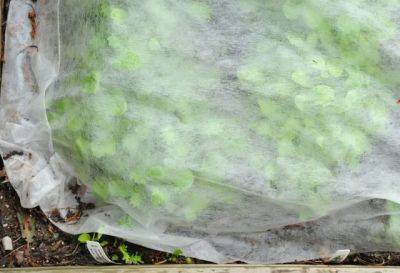
Growing under cover: tips from paul gallione
Gallione, in his position as Technical Services Technician in the research department at Johnny’s Selected Seeds in Maine, is used to answering gardeners’ questions. I started at the beginning with mine: Why grow crops under cover, anyhow?There are two basic uses for fabric row covers, Paul explained:To modify temperature (for heat retention or frost protection, most early and late in the season with heavyweight fabrics); As a barrier to keep out insects, crows, and chipmunks, to name a few common troublemakers. (Note: You can also create some shade, perhaps for summer salads—t
Popular Topics
Our site greengrove.cc offers you to spend great time reading Insects & worms latest Tips & Guides. Enjoy scrolling Insects & worms Tips & Guides to learn more. Stay tuned following daily updates of Insects & worms hacks and apply them in your real life. Be sure, you won’t regret entering the site once, because here you will find a lot of useful Insects & worms stuff that will help you a lot in your daily life! Check it out yourself!
